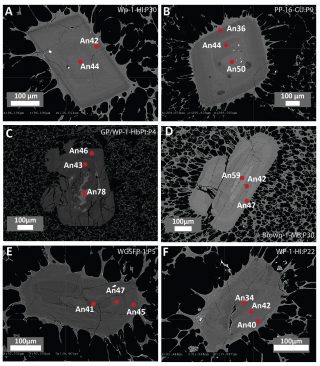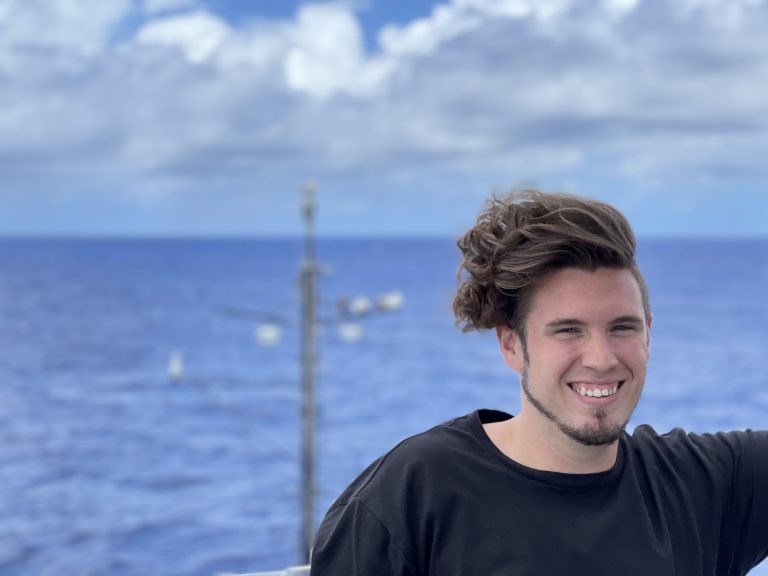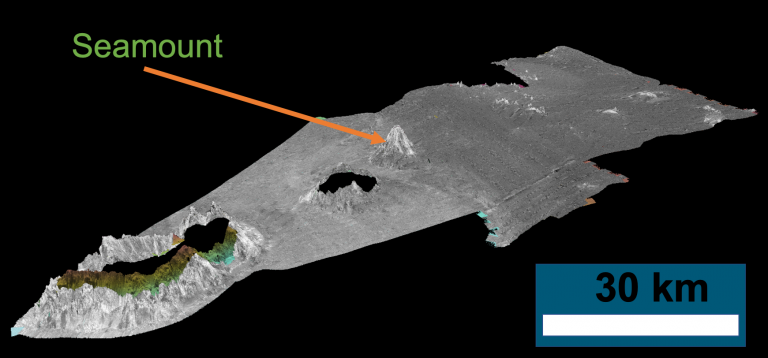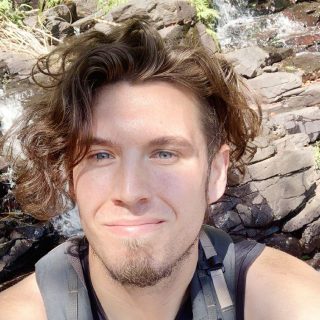I am Joseph Knafelc, a geologist from Green Bay, Wisconsin (US) in the final year of my PhD at the Queensland University of Technology, Australia. My current research focuses on deep-sea explosive eruptions. As geologists, we are trained to think in 3-dimensional space where understanding features at all scales is fundamental to our research.

In my PhD research, I use backscatter electron images to identify differences in chemistry within single crystals at the micron scale. These crystals are solidifying at the time of the eruption, so their chemistry records the conditions and triggers for volcanic eruptions (Knafelc et al., 2020). On the R/V Falkor, I am able to apply this skill to large-scale features (100 of meters to several km) we find while mapping the seafloor; specifically submerged volcanoes that appear in the backscatter SONAR data (Photo 2).
When I began my Bachelor’s at the University of Wisconsin at Oshkosh (UWO), I intended to become a civil engineer. During my freshman year, I took two semesters of introduction to geology, which piqued my interest in geology so much that I attended a 3-week summer geologic field mapping course to the Colorado Plateau. During that trip, I realized I could explore nature and bring samples back to a lab as a career.
The following semester, I made the big switch and changed my major to geology. Soon after I became more intrigued with magmatic processes underlying volcanoes and geochemistry, which directed me to work in the field of experimental petrology, while I pursued my Masters at Southern Illinois University-Carbondale (SIU). Experimental petrology typically involves working with high temperature/pressure furnaces which replicate extreme conditions of natural magmatic processes and volcanic events. I grew to love working in the lab and I still get excited every time I remove a molten red rock sample from a 1000°C + hot furnace.
Following my Masters, I started my PhD researching the Havre 2012 submarine eruption, which is the largest recorded submarine eruption in history (~1.5 km3), about 50% larger than the 1981 Mount St Helens eruption (~1.0 km3). The experience of getting to work on such a historical geological event, while living in a new country on the other side of the world, was something I could not pass up.

Throughout my PhD, my supervisors Scott Bryan and David Gust have encouraged me to gain as much research experience as possible. With their support, I travelled the Australian coast and islands to collect stranded pumice samples for my research. I also had the opportunity to analyse these samples at the Australian Synchrotron Facility, and have also conducted experiments at multiple universities across Australia. Taking on the leap of faith to move to Australia allowed me to explore a new world. I am fortunate to be living the life I envisioned following my first geology excursion to Colorado.
When the short-notice opportunity to participate in a research expedition as a Student-At-Sea on the “Seafloor to Seabirds” voyage on the R/V Falkor came up, I immediately contacted the Chief Scientist Derya Gürer. The voyage involves mapping the seafloor to potentially identify new seamounts and submerged micro-continents in the Coral Sea. This type of hands-on involvement at sea was missing from my submarine volcano research experience during my PhD, so I jumped at the opportunity.

Experiences like this do not come every day, and from my first week aboard I can tell you this expedition would not be possible without the hard work of the science team, marine technicians and ship’s crew aboard the R/V Falkor. I am grateful for their dedication, persistence, and enthusiasm to pass down their knowledge. Time moves fast, life passes by, photos capture a moment, but experiences can last a lifetime in memories. I am sure I will not forget my first experience at sea.

